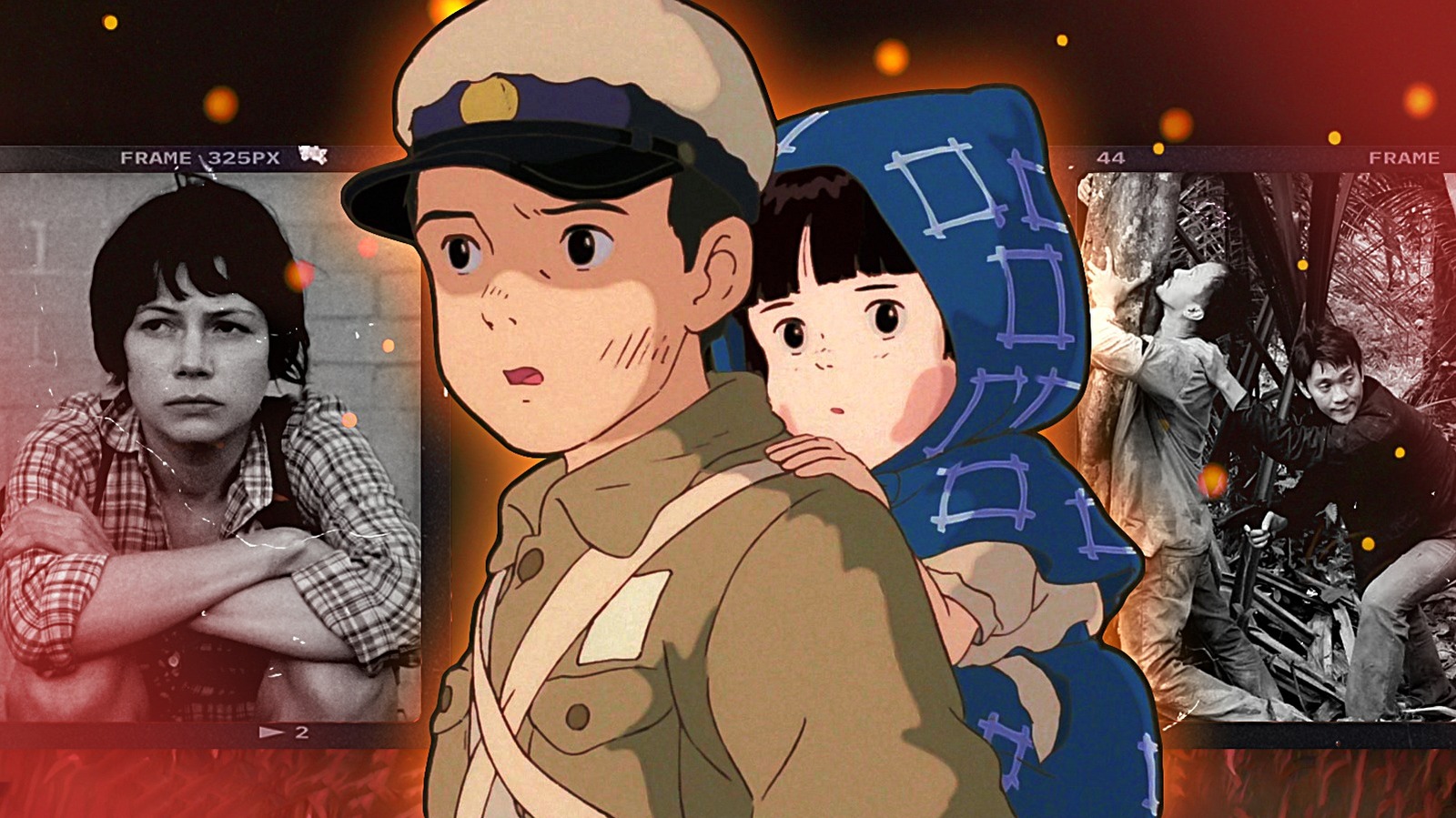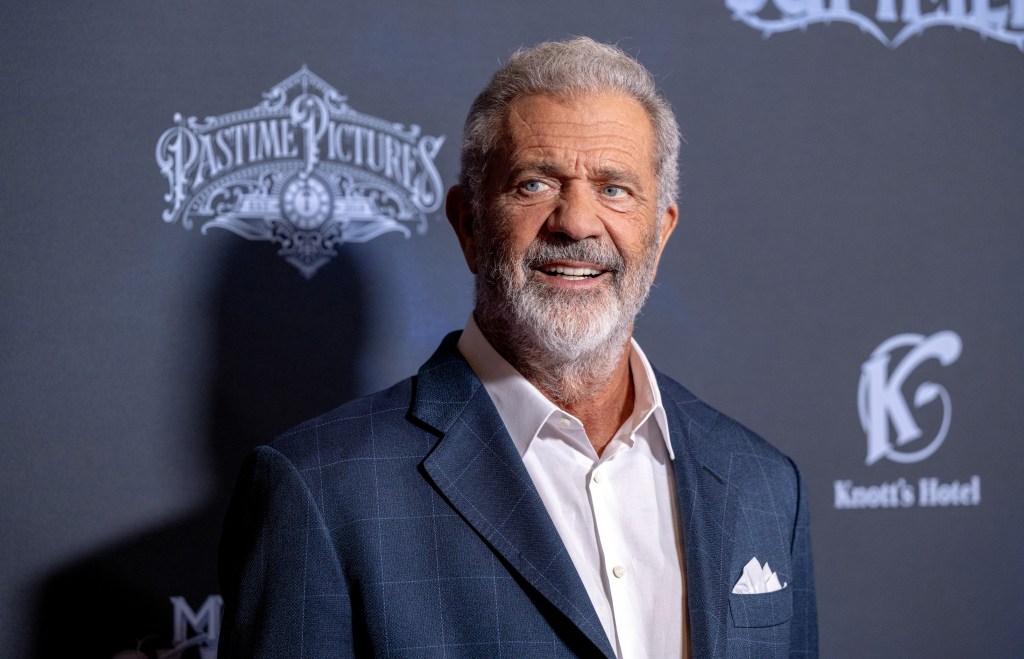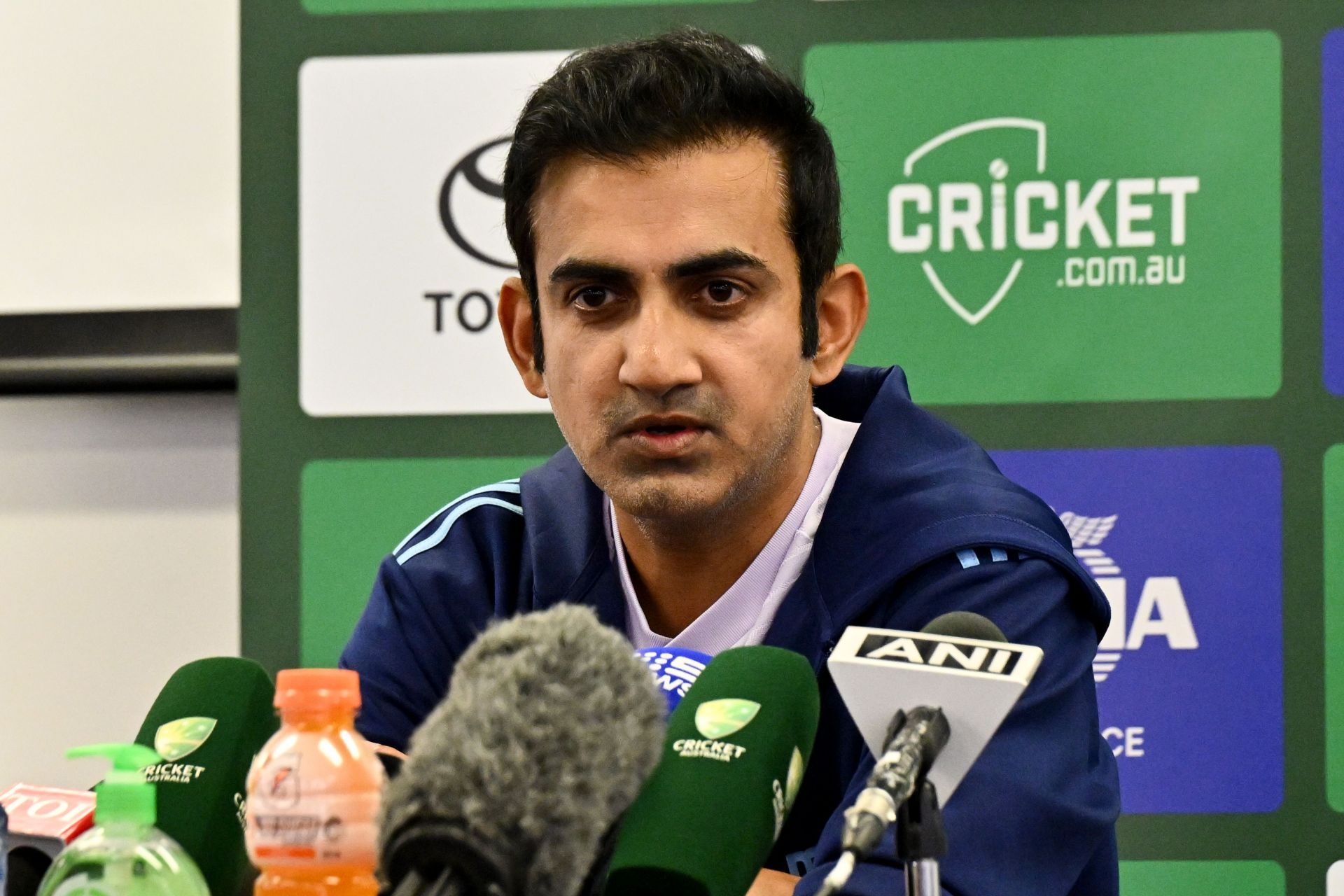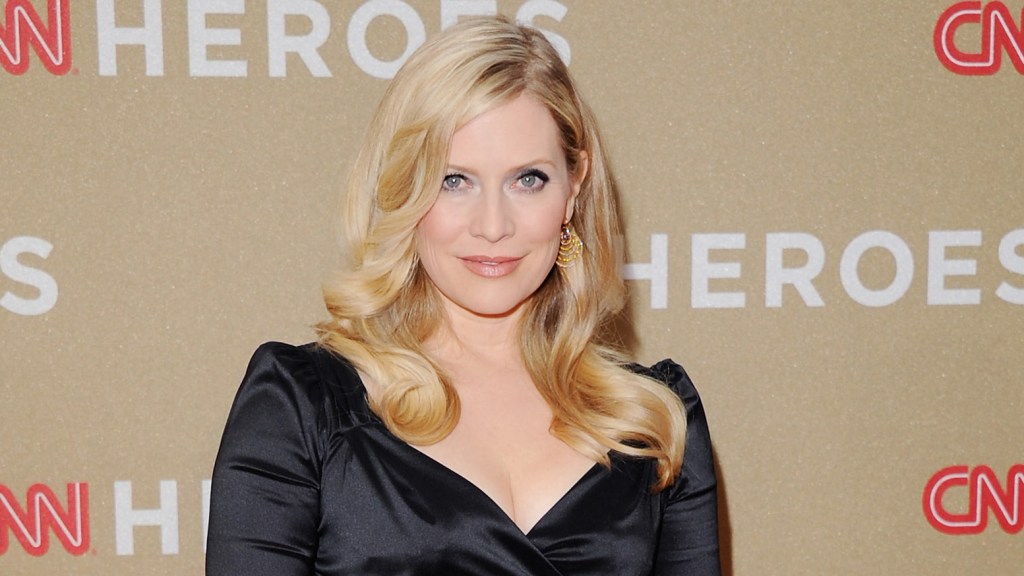
If film is, as Roger Ebert famously put it, a machine that generates empathy, then there’s perhaps no other artistic medium out there so perfectly suited to communicating and eliciting sadness. By the same token, movies are maybe the best medium at laying out a persuasive case for the value of sadness as an aesthetic experience. A good cry at a movie can be cathartic, therapeutic, restorative, sobering and educational, or merely painful and gut-wrenching and still have value for its sheer depth of experience.
To compile this ranking of the 15 saddest movies ever, we’ve tried to go beyond the territory of efficient tear-jerking, and look instead for those films that are positively drenched in gloom, pain, misery, and despair from beginning to end — the movies that articulate sadness as an existential constant as opposed to a momentary state. Get the tissues ready, take a deep breath, and happy (or not) viewing.
Make Way for Tomorrow
The last thing anyone in the 1930s expected was that zany musical comedy savant Leo McCarey would not only make a hard pivot to drama, but that, in doing so, he would reveal himself more courageous, candid, and merciless in his dramatic sensibilities than virtually any other Classic Hollywood director. Yet, that’s just what he did with “Make Way for Tomorrow.”
Scripted by celebrated novelist Viña Delmar, the 1937 film tells the story of an elderly couple (Victor Moore and Beulah Bondi), financially strung out since the Great Depression, who are forced to move in with their adult children when their house gets foreclosed. Impermeable to cliché or alleviating optimism, the film candidly observes the Coopers as they gradually accept that there’s no longer a place for them in their children’s lives, nor in the job market, nor in the world at large — taking the measure of aging in a money-driven world as a process of alienation from one’s own life and agency. There hasn’t quite been a more steadfastly tragic American studio film ever since.
Wendy and Lucy
Every Kelly Reichardt film is suffused with a whisper of quiet, fossilized sadness. Her films present themselves without overemphasizing, trusting that the audience will pay enough attention to catch onto all their rich layers of pathos, politics, and tragedy. But even a viewer completely unaccustomed to minimalist slow cinema would be unable to resist the sheer emotional wallop of 2008’s “Wendy and Lucy” — the most heartbreaking dog movie of all time.
True to Reichardt’s artistic philosophy, this is not the kind of dog movie that makes big, clunking plays for tears; it understands that the friendship between Wendy Carroll (Michelle Williams, in one of her best movies) and her titular pet will be touching enough on its own to tug at heartstrings just by being met with a realistic deluge of hardship. Wendy is a dirt-poor young woman who’s traveling to Alaska in hopes of finding employment; though she must make exhausting financial calculations to provide for herself every single day, she is determined to also provide for Lucy — which becomes harder and harder as the cruelties of capitalism pile up on top of them. It’s an almost intolerably brutal movie about the labor of living with dignity in the United States.
Xiu Xiu: The Sent-Down Girl
Legendary Chinese actor Joan Chen has an underrated but similarly accomplished career as a film director — and her first movie, 1998’s “Xiu Xiu: The Sent-Down Girl,” was emotionally and existentially piercing enough to become an international cult classic.
The film’s plot essentially consists of a barrage of suffering and tragedy as experienced by Wenxiu, aka Xiu Xiu (Li Xiaolu), a 15-year-old city girl who gets sent off to the rural plains of Sichuan during the Chinese Cultural Revolution, and then finds herself increasingly depleted of hope and vulnerable to various exploitative men as it becomes clear that she might never be able to return home.
It’s not the incidents themselves, though, harrowing as they may be; it’s the way Chen films them. Her movie is no one-dimensional trauma conga; she deeply empathizes with both Xiu Xiu and her sole confidante, Tibetan horseman Lao Jin (Lopsang), and offers them in framing and editing the grace they’re scarcely afforded in their lives, creating a journey that feels painfully, irrevocably human, even as it plows down stunning depths of darkness.
Ingeborg Holm
One of the saddest movies of all time was also one of the very first narrative feature films. The earliest extant film from Swedish silent cinema master Victor Sjöström, “Ingeborg Holm” feels shockingly modern for a feature film released in 1913, when the language of narrative cinema sustained for more than a few minutes basically had yet to be developed.
What’s more, it created the template for every subsequent social-issue drama. Every movie that has ever set out to work tear ducts and inspire compassion by realistically depicting the trials of people at the margins of society has a common ancestor in the story of Ingeborg Holm (Hilda Borgström), a Swedish woman who struggles mightily yet fruitlessly to make ends meet for herself and her three children after her husband’s sudden death from tuberculosis.
Even accounting for what a trailblazing genius Sjöström was, “Ingeborg Holm” is unbelievably successful at deploying layers of editing and screenwriting for maximum emotional wreckage; the film’s opposition between the enduring enormity of a mother’s love and the unsparing harshness of poverty actually inspired changes in Sweden’s poorhouse legislation at the time.
No Home Movie
No one could get to the heart of existential malaise quite like Chantal Akerman — not because the Belgian filmmaker had a single-minded focus on misery and ennui (on the contrary, many of her best films are peppy, romantic, and positively delightful), but because, when she did elect to tackle misery and ennui, she arguably did it with more clarity, courage, and curiosity than any other filmmaker in history. Any number of Akerman films could fit well on this list — but, for sheer sadness, it’s hard to beat “No Home Movie,” her last and most personal film.
“No Home Movie” is an intimate documentary consisting of a series of videos of Akerman conversing with her mother Natalia, an Auschwitz survivor whose loving but tense relationship with Akerman permeated a lot of her filmography. At once an urgent effort to document and preserve Natalia’s humanity at the twilight of her life, a complex real-time processing of decades of unspoken baggage between mother and daughter, a poetic audiovisual tussle with time and impermanence, and an expression of Akerman’s own existential anguish (she would die by suicide two months after the film’s release), “No Home Movie” is the cinematic equivalent of watching a master of the medium unpeel every layer of distancement or denial, depriving us of any artificial comfort, laying bare her own raw, aching self.
If you or someone you know is struggling or in crisis, help is available. Call or text 988 or chat 988lifeline.org
The Last Stage
Another incredible, nearly unbearable, yet deeply moving film that features the participation of Auschwitz survivors is 1948’s “The Last Stage” — the original narrative Holocaust film, and still arguably the most essential one. Directed and co-written by Polish filmmaker Wanda Jakubowska, “The Last Stage” was inspired by Jakubowska and co-writer Gerda Schneider’s own experiences as Auschwitz inmates during World War II, was shot in Auschwitz, and features several other Auschwitz survivors in key roles.
Utterly divorced from the determination to stir viewers into “feeling the weight” of Auschwitz via crass emotional manipulation, “The Last Stage” merely endeavors to depict daily reality in the concentration camp as closely and candidly as possible, with an emphasis on the camp’s resistance fighters. Free of both sensationalism and sugarcoating, instead letting the horrors and the murderous minutiae of Nazi ideology speak for themselves, it’s the rawest, most unflinchingly up-close and personal evocation ever committed to film of one of the most heinous chapters in human history — a movie that disturbs and rattles and revolts by steadfastly committing to the unembellished truth.
Melancholia (2008)
Not to be confused with Lars von Trier’s eponymous (and also very sad) 2011 film, Lav Diaz’s “Melancholia” is the most uncompromising and ambitious work in the career of the prickliest, most unyielding, most idiosyncratic auteur of contemporary cinema.
Spoken in Filipino and sitting at 7 hours, 30 minutes — which makes it only the fifth-longest film in its director’s oeuvre, in case you haven’t yet met Lav Diaz — the film begins by charting two women (Angeli Bayani and Malaya) and a man (Perry Dizon) in the process of mourning the people they’ve lost to a murderous fascist regime. To deal with their fathomless grief, they commit to a radical, epic role-playing exercise in which they take up the parts of a prostitute, a nun, and a pimp — but the role-playing only buries them further in sorrow and alienation.
Starting from there, Diaz uses every one of the film’s 450 minutes to burrow deeper into the question of what makes these three characters, the world they hail from, and humankind at large so vulnerable to sadness and despair — a question that he investigates placidly, with an almost numbing sense of droning bleakness, until it explodes into brutal, raving, jaw-dropping chaos.
Tokyo Story
If Yasujiro Ozu’s work is largely defined by its masterful use of stillness, mundanity, and casual poetry to summon deep pathos where you least expect it, “Tokyo Story” is Ozu pushing his style to a radical yet unassuming extreme. No other film out there will sneak up on you so quietly and mightily with such gigantically crushing emotions.
Widely considered one of the greatest movies of all time, “Tokyo Story” is another film that charts the process by which two elderly parents (Chishu Ryu and Chieko Higashiyama) ease into the realization that their adult children no longer have space for them in their lives. Yet Ozu pushes the theme even further than Leo McCarey by making it not just a question of ageism and waning capitalist productivity but one of fundamental human loneliness.
In the grief- and regret-soaked landscape of postwar Japan, Ozu finds the ideal petri dish for a study of all the ways in which people fail to connect, trip over words, stifle themselves and their wants and hopes and fears, hurt each other mindlessly, and yearn — for understanding, for forgiveness, for love, for company that nobody can seem to keep. It’s a gentle and patient film that leaves you with bruises for life.
The Ascent
There are war movies, there are movies about the unspeakable tragedy of war, and then there is “The Ascent.” The most famous film from Soviet filmmaker Larisa Shepitko, a generational talent who left the world too soon at 41 years old, this underrated ’70s movie is a swift and stunning descent into cosmic and existential horror, as manifested in the soul-crushing decisions and desperate measures that war foists upon two World War II Soviet partisans (Boris Plotnikov and Vladimir Gostyukhin) left to their own devices in the freezing Belarusian wilderness.
The film’s whiteout winter landscape is not just a plausible, vividly-rendered World War II theater but a metonymic purgatory for all of humanity, trapped within it by the wages of its own ceaseless violence. When it comes to grappling with the fundamental spiritual degradation and agony that war engenders, nearly every other movie ever made in the genre is comparatively redundant.
Dear Zachary: A Letter to a Son About His Father
The saddest documentary ever made, “Dear Zachary: A Letter to a Son About His Father” tells a gripping story that’s best discovered in real time. But the gist of it is: Following the murder of his friend Andrew Bagby, filmmaker Kurt Kuenne learns, in 2002, that Bagby’s ex-girlfriend Shirley Turner is expecting Bagby’s child, and sets out to make a tribute film to Bagby by collating interviews with his loved ones and archival footage from his life, so that Bagby’s son Zachary will have something to know his father by.
Through virtuosic editing, both Bagby’s life and the astounding vicissitudes of his murder case are unspooled in a way that feels well-nigh emotionally violent to experience. The impassioned way Kuenne puts formal tools in service of personal expression makes for essential viewing — but only if you’re ready to be utterly and completely devastated.
Mississippi Damned
Tina Mabry’s “Mississippi Damned” artfully sidesteps the exploitative, patronizing trappings of hokey social dramas centered around Black trauma. It does so by dutifully and lovingly foregrounding the characters’ humanity at every turn, creating a family portrait that’s far too rich and dynamic to slot into mere sensationalism. It most certainly doesn’t do so for lack of trauma.
Partly autobiographical and steeped in lived-in detail, Mabry’s film follows the lives of three kids from rural Mississippi (Chasity Kershal Hammitte, Malcolm Goodwin, and Tessa Thompson in her breakthrough film role) who are struggling to break free from a cycle of generational abuse. As they grow up, tragedy, violence, and despondency pile up with a relentlessness that boggles the mind. Yet, what makes the film shattering is that each development is handled with nuance and authenticity, never once slipping into the sort of trite sentimentalism that sometimes distances tragedy-filled dramas from the viewer and makes them go down easier. It’s a deep, thoughtful meditation on trauma as opposed to a mere presentation of it — and that makes it all the more heartrending to watch.
The Sweet Hereafter
Adapted from the eponymous novel by Russell Banks, 1997’s “The Sweet Hereafter” is the most sincere, grounded, and emotionally forthright work of inveterate Canadian neo-surrealist Atom Egoyan. Structured nonlinearly around a horrifying school bus crash that’s only agonizingly talked around until long into the film, it stars Ian Holm as Mitchell Stephens, an attorney who travels to the small wintry town of Sam Dent, British Columbia to try and persuade its grieving parents to file a class-action lawsuit.
Against whom, he doesn’t know for sure, nor do the townsfolk; Mitchell, haunted by his own personal tragedies, wants there to be a guilty party, and wants the citizens of Sam Dent to believe it too, yet his invasive presence only serves to dishevel the already-impossible mourning process of a town locked into a permanently, inescapably haunted state. Armed with Egoyan’s full set of singular mood-sustaining and psychology-probing skills, yet completely stripped of the beckoning inscrutability that defines many of his films, “The Sweet Hereafter” is a movie that lets grief expand across the screen with the full, overwhelming scope of a Super Panavision landscape, reaching all the way to the edges of perception.
Forever a Woman
In all of film history, there’s no other first-person view of illness and death more exacting than Kinuyo Tanaka’s 1955 masterpiece “Forever a Woman” (also known in English as “The Eternal Breasts”), which first presents us with a human life in all its fullness, complexity, vibrancy, and hunger for expression — and then painstakingly charts that life as it trudges towards its end.
The life in question is that of Fumiko Nakajo (Yumeji Tsukioka), a real-life Japanese tanka poet who lived between 1922 and 1954. Originally an unfulfilled housewife, Fumiko divorces her husband and begins to get into poetry as a vehicle for the repressed substrates of her mind and heart, only to be diagnosed with terminal breast cancer. “Forever a Woman” then charts Fumiko’s long and laborious scuffle with the disease, showing how her relationship to her deteriorating body informs and is informed by her poetry, which becomes more urgent and intense as she yearns more and more for the epic recesses of a life that she’ll never get to live in full. If that sounds unbearable, rest assured — Tanaka’s searching, poetic, ruthlessly empathetic camera makes it all the more so.
Grave of the Fireflies
Unless you’re the kind of person who never ever cries at movies — and maybe even then — it’s not so much a question of if you’ll cry at “Grave of the Fireflies” so much as one of when and how much and for how long. Isao Takahata’s work of detailing the utterly hopeless conditions endured by two young siblings left orphaned by the destruction of World War II is strenuous and single-minded; the film’s milieu is one of abject hell, and Takahata charges into it without a moment’s hesitation.
That it’s all rendered in the customarily lush, tender, and evocative manner by Studio Ghibli makes this 1988 film even more excruciating; the gorgeous contours and colors of the animation act as a constant reminder of the human spirit’s fundamental beauty and potential, which Seita (Tsutomu Tatsumi) and Setsuko (Ayano Shiraishi), mere children that they are, are being continually denied by an incomprehensibly cruel world. It’s little wonder that the movie traumatized a generation.
Cries and Whispers
Opening with the most chilling wail of pain in all of cinema, “Cries and Whispers” is the movie in which Ingmar Bergman does away with every subterfuge and allegorical conceit through which he previously made roundabout incursions into the subject of death, and finally tackles it from the front. The film is made up of one person dying, with all the attending physical and existential pain blown up to maximum audiovisual size, while her loved ones look on helplessly and grapple with the certainty that the same fate awaits them. It’s oppressive stuff. It’s completely depressing. It’s a masterpiece.
Proceeding from the specific to the (non-)transcendental, Bergman uses his monumental gifts as a director to make the audience feel not only every gram of Agnes’ (Harriet Andersson) uterine cancer-inflicted pain, but also each of the cascading agonies and regrets it sets off in her sisters (Liv Ullmann and Ingrid Thulin). The family’s sumptuous 19th-century mansion becomes a living mortuary for itself, a crimson-strewn prison from which neither they nor any of us can escape. Forget tears; this is a movie to watch only if you’re ready to be washed over by the kind of complete, aggressive, bottomless agony that most people spend all their lives trying not to face head-on.





